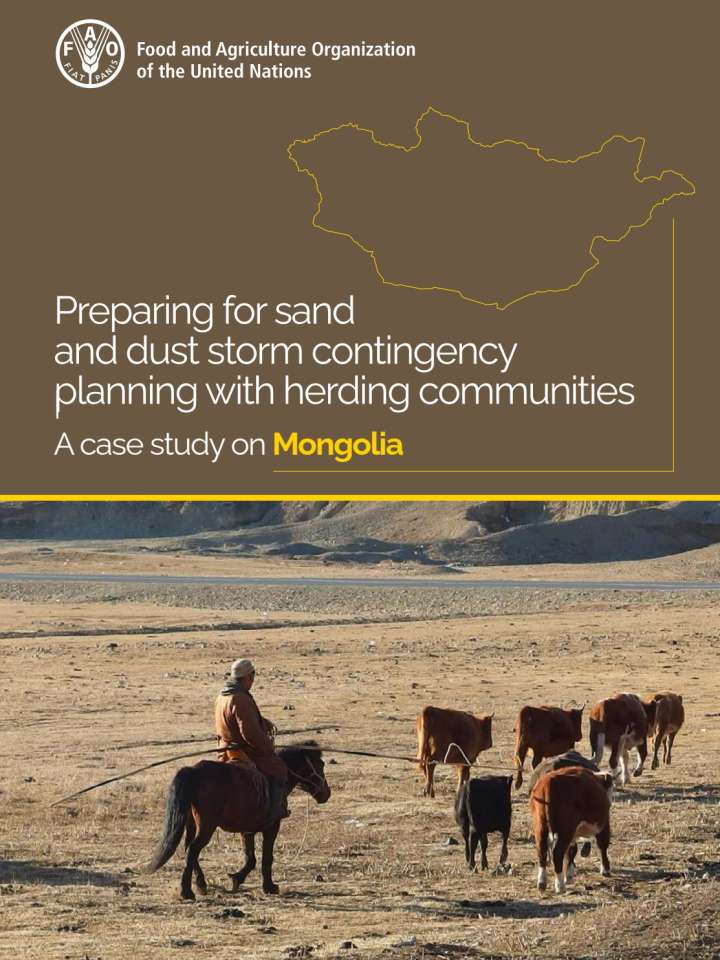Preparing for sand and dust storm contingency planning with herding communities: A case study on Mongolia
This report outlines the conceptual framework for sand and dust storms (SDS) hazard risk and vulnerability assessment and mapping in agriculture and provides the elements as part of SDS contingency planning process in agriculture in Mongolia. Its main purpose is to provide an applicable procedure to reduce SDS risk and impacts on agriculture. This is the first attempt to develop a contingency plan for SDS risk reduction in agriculture. It includes a set of agriculture-specific indicators proposed to assess SDS risk and discusses the required steps for developing indicators and procedures.
Furthermore, a methodology for SDS contingency planning in agriculture is described, including the legal and institutional frameworks in Mongolia relevant to SDS intervention as well as the organizational responsibilities for implementing the contingency plan. It reviews the main action areas and challenges to be addressed in SDS contingency planning in agriculture for two rural districts or soums (Saintsagaan soum of Dundgobi province and Zamyn-Uud soum of Dornogobi province). It provides an action framework for the identification and fine-tuning of SDS priority actions to be addressed and integrated into existing national and local SDS disaster risk reduction/management plans and/or sectoral development plans in Mongolia.
Explore further
